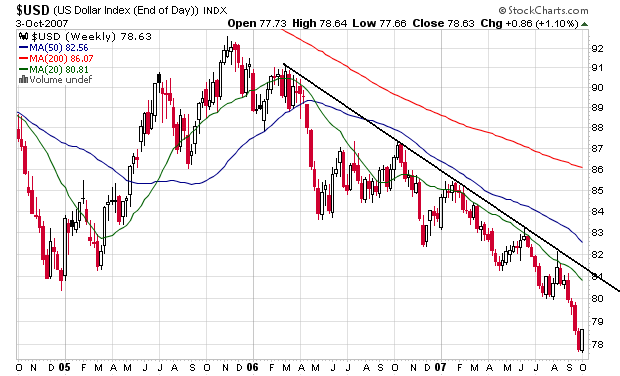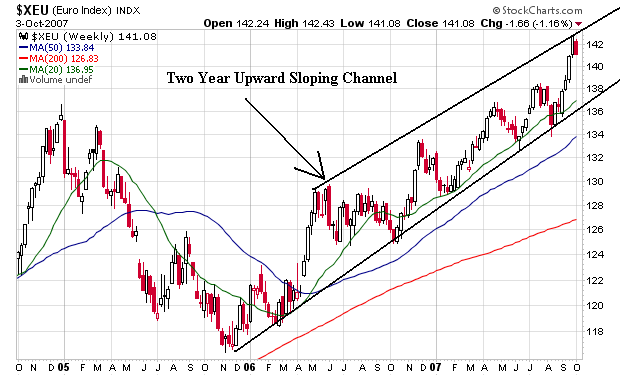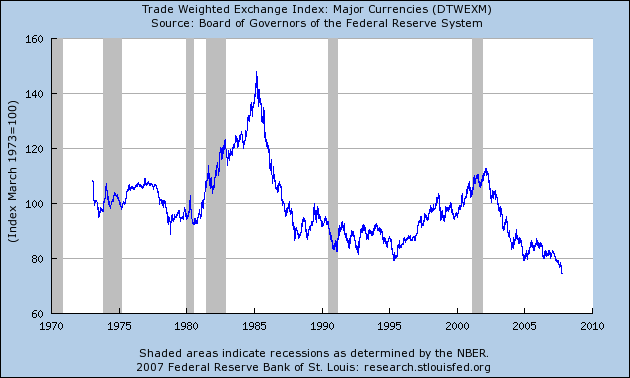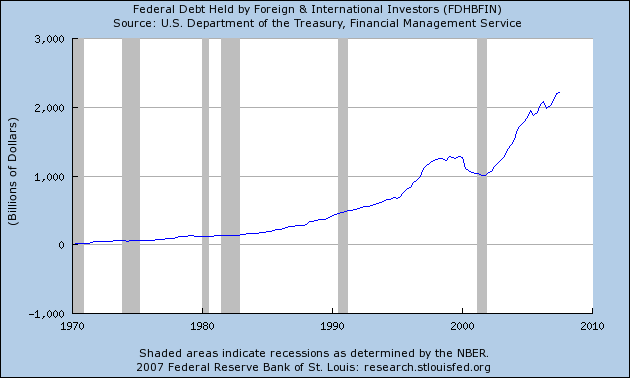From the UK Telegraph:
Vietnam is planning to cut its purchases of US Treasuries and other dollar bonds, raising fears that Asian central banks with control over two thirds of the world's foreign reserves may soon join the flight from US assets.
The Saigon Times said this morning that the State Bank of Vietnam was abandoning the attempt to hold down the Vietnamese currency through heavy purchases of dollars. The policy is causing the economy to overheat, driving up inflation to 8.8pc.
advertisement
Vietnam, which has mid-sized reserves of $40bn, is seen as weather vane for the bigger Asian powers.
Together they hold $3,575bn of foreign reserves, over 65pc of the world's total. China leads with $1,340bn, but South Korea, Taiwan, Singapore, and even Thailand all built up massive holdings.
Here is a chart of the dollar over the last two years. For those of you who want a perfect example of a bearish chart, here it is. Notice the following.
1.) The trend is clearly downward. There is a very solid and distinct downward sloping trend line that connects all of the peaks.
2.) The shorter moving averages are below the longer moving averages. This will bring the longer moving averages continually lower.
3.) All of the moving averages are trending lower.
4.) Prices are below the moving average. This will drag all of the moving averages lower.
In other words, every element on this chart is bringing prices lower.

At the same time, here is a chart of the Euro index which is the exact opposite. Notice the following.
1.) All of the moving averages are heading higher.
2.) The shorter moving averages are above the longer averages. This will bring the longer SMAs up.
3.) Prices are above the moving averages. This will bring all of the moving averages up.
4.) There is a clear trend moving upward that connects the lowest points on the chart.

The dollar's value (or lack thereof) was a primary reason I argued the Fed shouldn't cut interest rates. Here is a trade-weighted average of the dollar going back 30+ years. Notice we are now at or near the lowest point in that time.

Finally, here is a chart of total US debt held internationally. Notice the large increase over the last 7 years.

Let's tie all of these ideas together.
1.) The US is increasingly dependent on foreign financing.
2.) At the time the US is more dependent on foreign financing, the dollar is at or near it's lowest point in more than 30 years.
3.) The Federal Reserve just lowered interest rates, making US assets less attractive to foreign investors.
4.) Number three leads to a decrease in value of all the US assets held abroad.
5.) Investors don't like holding assets that are dropping in value.